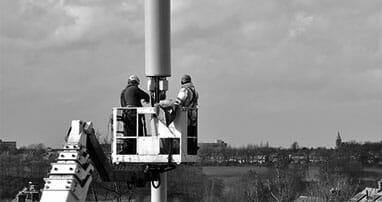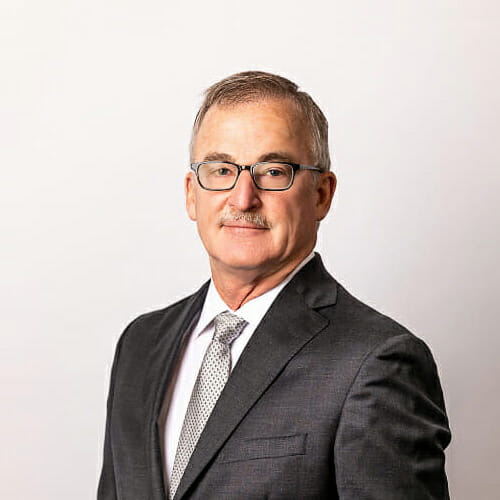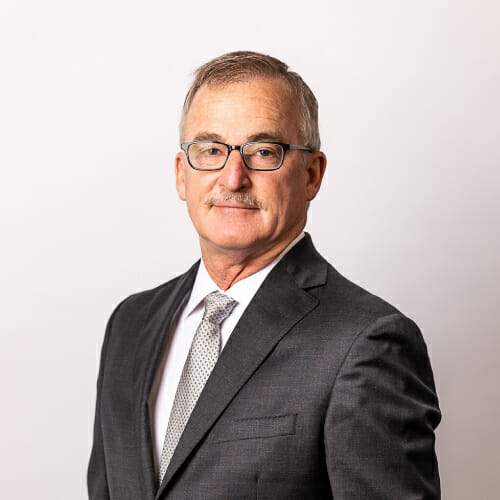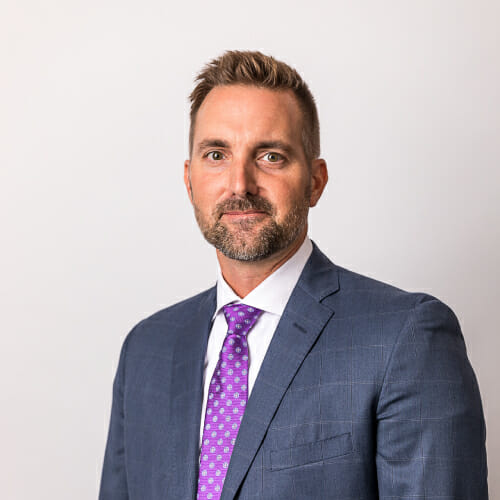$1.75
Million
$1.75 million settlement
Our personal injury lawyers won a $1.75 million settlement for N.T.'s injuries at a work site.
Which job do you think has been called the most dangerous one in America? Mining? Logging? Construction? Turns out it’s working on cell phone towers.
Time Out for a Quick Lesson

Ninety percent of U.S. citizens own at least one cell phone. As landline telephones slowly go the way of television test patterns (four out of ten adults live in homes that have only wireless telephone access), cell phones become critical for worldwide communication. Smartphones up the ante by supplying internet connectivity as well.
But, do you know how your cell phone works? Briefly: Your phone communicates via radio frequency waves with the nearest tower’s antenna. Calls are usually handed off at least part of the way to ground wires or cables and then are switched back to wireless signal to reach the person you are calling. All of this happens in a tiny fraction of a second.
Now, back to the towers. Towers must be hundreds of feet high—some are in excess of a thousand feet high—for the antennas attached to them to receive signals from phones in the area. These antennas, and sometimes the towers themselves, like anything else, can have problems or simply need maintenance. That’s when a brave and hardy band of roughly 10,000 workers goes out to fix and maintain our country’s 300,000 cell phone sites.
Risks and Injuries to the Workers
The average fatality rate, from 2003 to 2010, for the construction industry, was roughly 11 deaths for every 100,000 workers. For the tower industry, it was over 11 times as high: approximately 124 deaths for every 100,000 workers.
Common risks for tower workers include:
- Falls, often from great heights
- Being struck by falling objects
- Risks from using base-mounted drum hoists, and failure of such equipment
- Electrocution
- Weather hazards.
As you might expect, the biggest danger to tower workers are falls, and it is an injury most likely to cause fatalities.
There was a time when tower building wasn’t common, and a small band of well-trained workers constructed and maintained our needed radio and television towers. But when cell phones exploded in popularity, that all changed. Our need for cell phone bandwidth capacity continues to expand, meaning more towers and more risks to workers.
Tragedy for an Indiana Man
In July of 2014, an Indiana man working on a Verizon cell phone tower in Kentucky was killed when the rigging holding a new boom broke. The terrible accident, where the man’s body had to be left hanging in the air for hours, also traumatized the man’s coworkers, a crew that was working for a subcontractor.
Determining Responsibility When Things Go Wrong
The death of the Indiana cell tower worker illustrates one factor that may contribute to worker injury and death — the use of subcontractors. Tower workers are not usually direct employees of the companies that pay for the towers. In fact, there can be a chain of third-party contractors doing the risky work. The trend of companies’ outsourcing their riskiest jobs to subcontractors can make it hard for organizations like OSHA to find someone to hold accountable when injury or death occurs. It’s been shown that subcontract workers often face greater risks than regular employees.
Additionally, a 2012 report found that many incidents occurred because of a lack of training, a lack of sufficient rest, and inadequate safety equipment.
“Tower worker deaths cannot be the price we pay for increased wireless communication,” said Dr. David Michaels, assistant secretary of labor for occupational safety and health. “Employers and cell tower owners and operators must do everything possible to stop these senseless, preventable tragedies.”
Safety Standards
Shortly after the tragic incident mentioned above, OSHA updated its Communication Tower directive to address the used of hoist systems that move workers from place to place on communication towers. The improper usage of hoist systems, or faulty hoist systems, can be the cause of preventable deaths among tower workers.
As tower worker deaths, on the increase the past few years, continue to climb, more standards will need to be tightened to address these entirely avoidable fatalities.

 Mike Stephenson has 40 years of experience and is a trusted advisor to many individuals and companies. His current practice is dominated by civil litigation in state and federal courts. He focuses much of his time on handling catastrophic injuries caused by all types of accidents, including motor vehicle, trucking, workplace injuries, product liability, and fire, just to name a few. He also works extensively in construction accidents. [
Mike Stephenson has 40 years of experience and is a trusted advisor to many individuals and companies. His current practice is dominated by civil litigation in state and federal courts. He focuses much of his time on handling catastrophic injuries caused by all types of accidents, including motor vehicle, trucking, workplace injuries, product liability, and fire, just to name a few. He also works extensively in construction accidents. [ 


